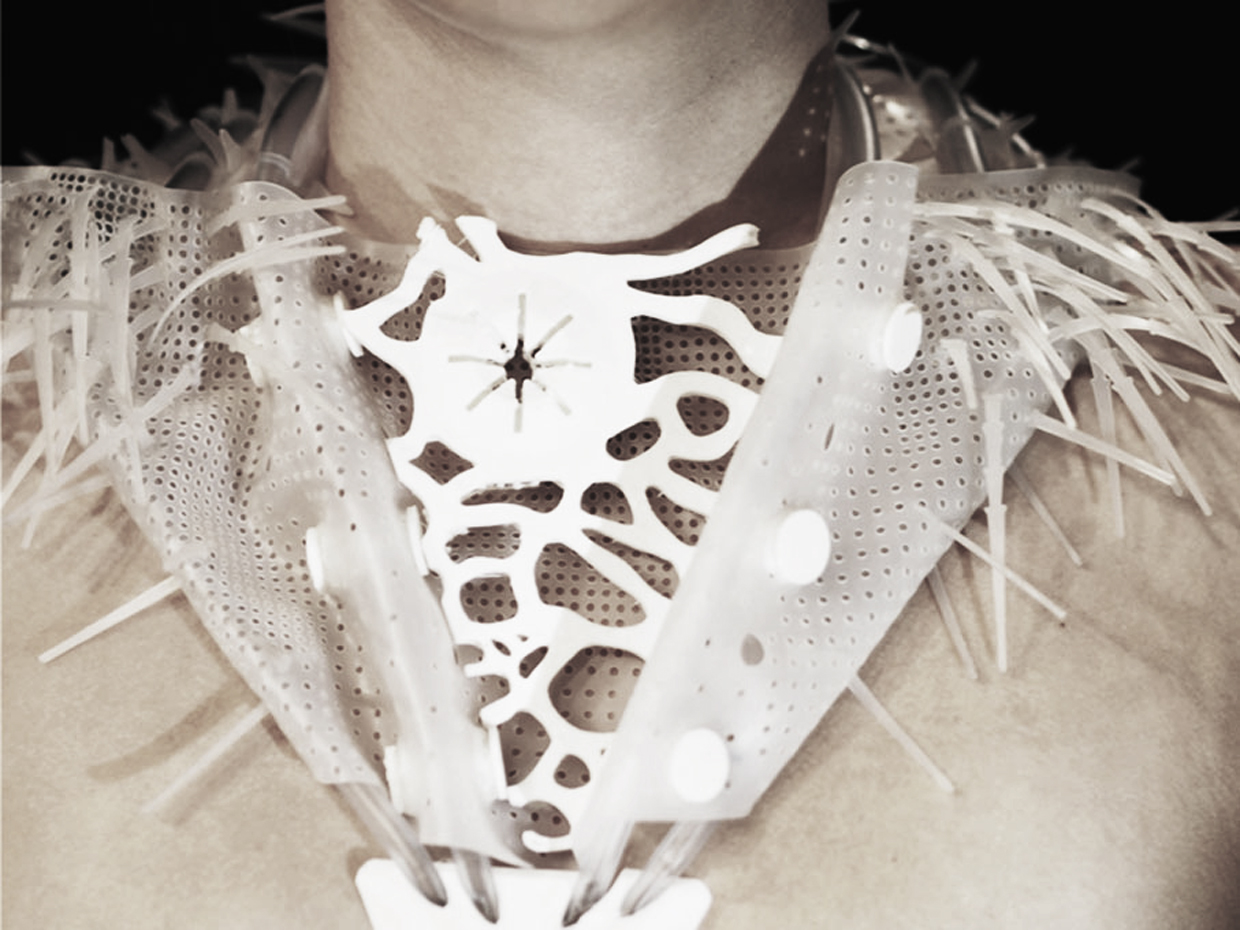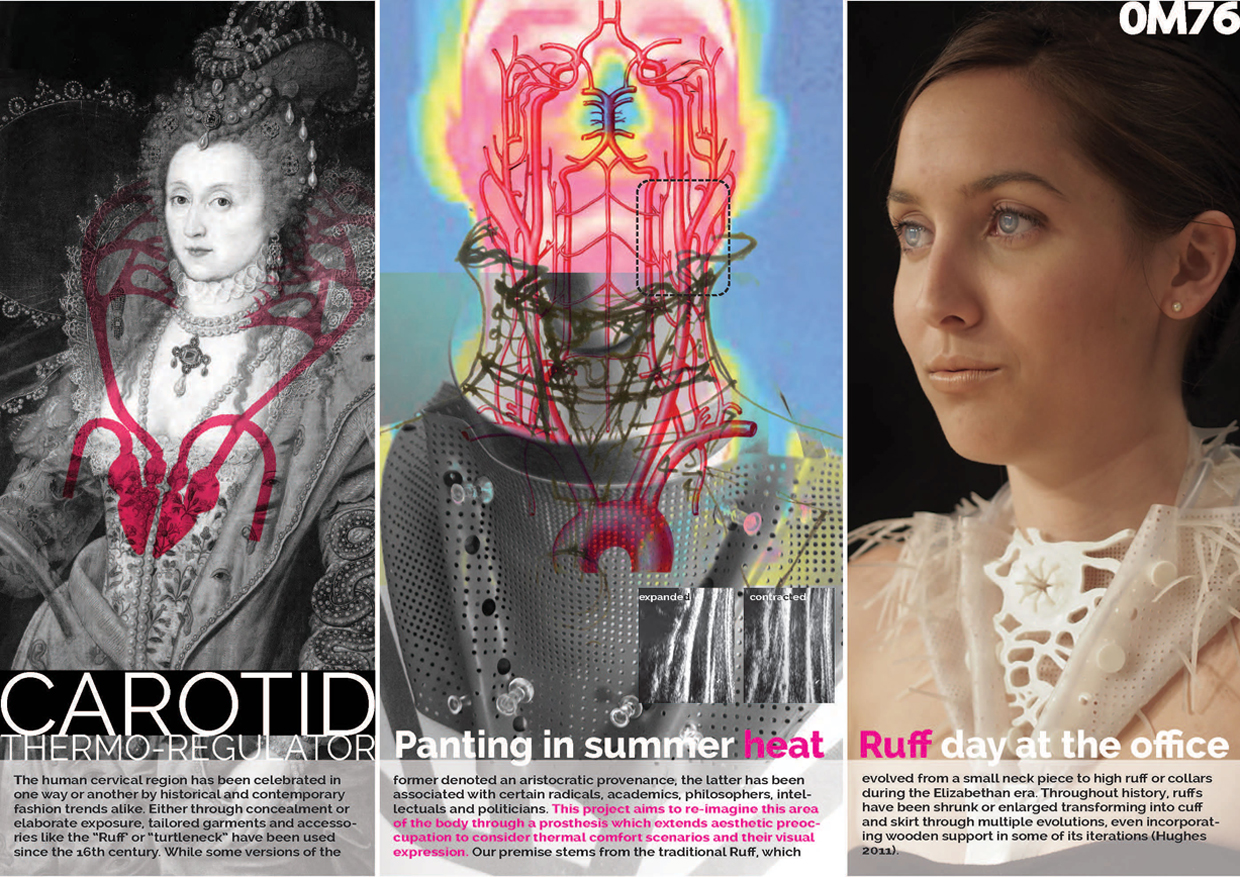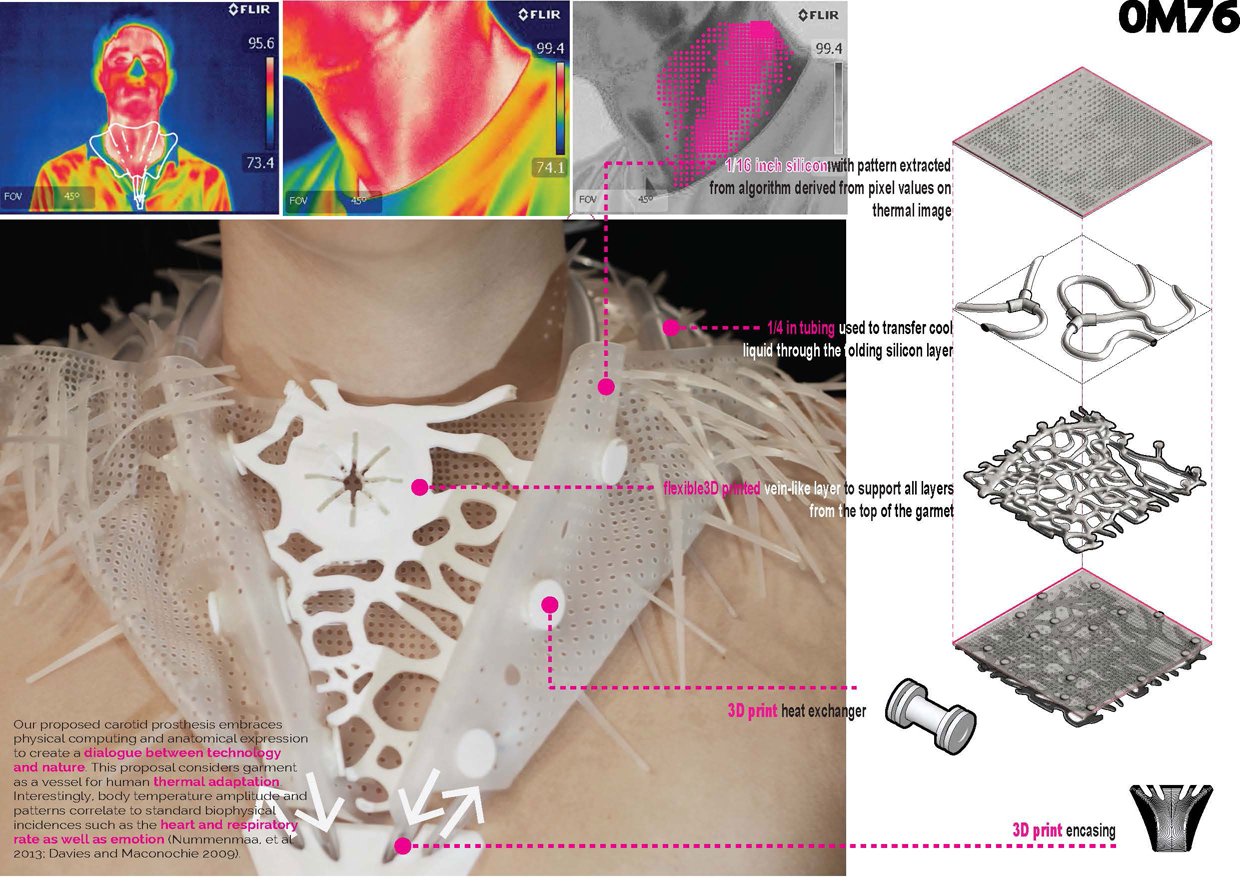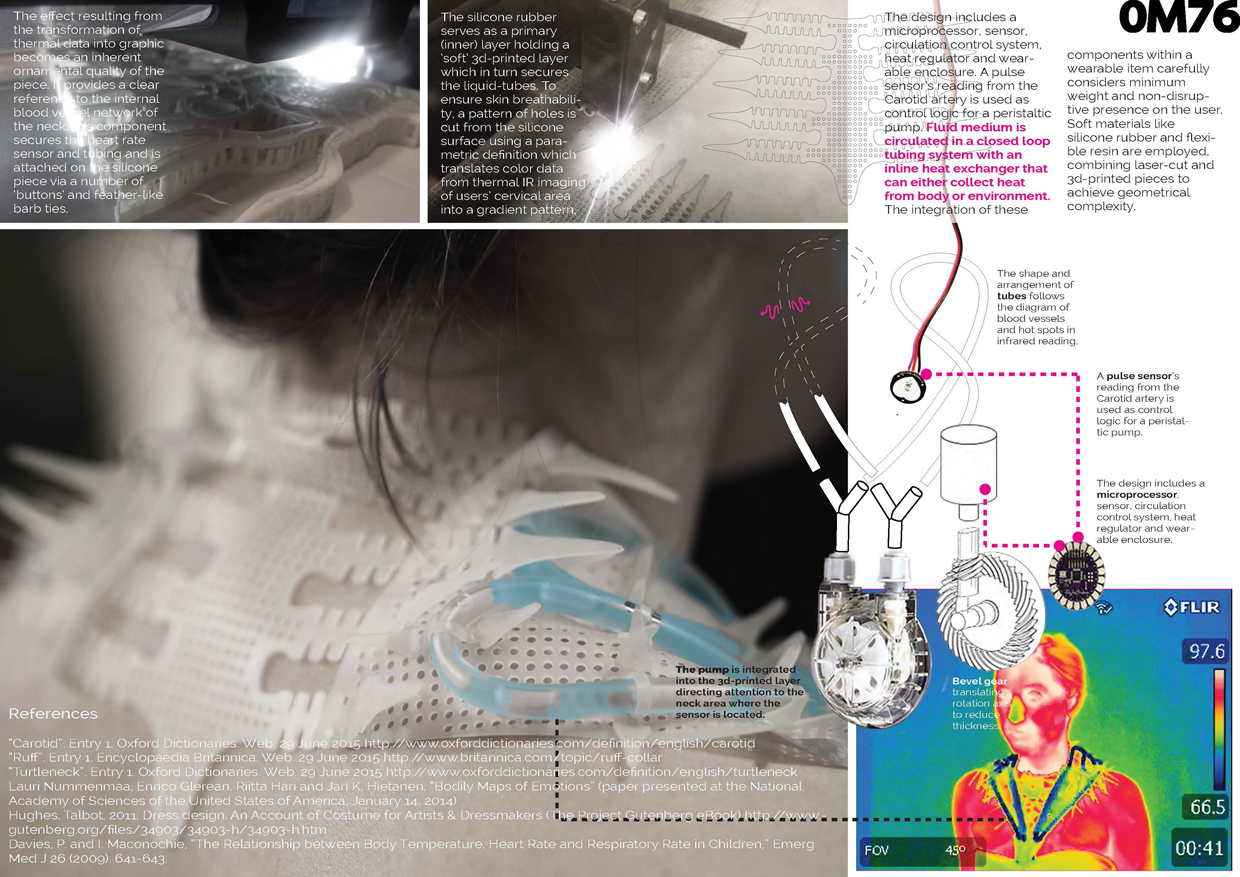Carotid Thermo-Regulator
Reshape'15 | Wearable Technology Competition
Project Description
Project Detail
Reinventing the traditional neck Ruff as a liquid translator of bodily emotion
The human cervical region has been celebrated in one way or another by historical and contemporary fashion trends alike. Either through concealment or elaborate exposure, tailored garments and accessories like the “Ruff’ or “turtleneck” have been used since the 16th century. While some versions of the former denoted an aristocratic provenance, the latter has been associated with certain radicals, academics, philosophers, intellectuals and politicians. This project aims to re-imagine this area of the body through a prosthesis which extends aesthetic preoccupation to consider thermal comfort scenarios and their visual expression. Our premise stems from the traditional Ruff, which evolved from a small neck piece to high ruff or collars during the Elizabethan era. Throughout history, ruffs have been shrunk or enlarged transforming into cuff and skirt through multiple evolutions, even incorporating wooden support in some of its iterations (Hughes 2011). Our proposed carotid prosthesis embraces physical computing and anatomical expression to create a dialogue between technology and nature. This proposal considers garment as a vessel for human thermal adaptation. Interestingly, body temperature amplitude and patterns correlate to standard biophysical incidences such as the heart and respiratory rate as well as emotion (Nummenmaa, et al. 2013; Davies and Maconochie 2009). The design includes a microprocessor, sensor, circulation control system, heat regulator and wearable enclosure. A pulse sensor’s reading from the Carotid artery is used as control logic for a peristaltic pump. Fluid medium is circulated in a closed loop tubing system with an inline heat exchanger that can either collect heat from body or environment. The integration of these components within a wearable item carefully considers minimum weight and non-disruptive presence on the user. Soft materials like silicone rubber and flexible resin are employed, combining laser-cut and 3d-printed pieces to achieve geometrical complexity. The silicone rubber serves as a primary (inner) layer holding a ‘soft’ 3d-printed layer which in turn secures the liquid-tubes. To ensure skin breathability, a pattern of holes is cut from the silicone surface using a parametric definition which translates color data from thermal IR imaging of users’ cervical area into a gradient pattern. The effect resulting from the transformation of thermal data into graphic becomes an inherent ornamental quality of the piece. It provides a clear reference to the internal blood vessel network of the neck; this component secures the heart rate sensor and tubing and is attached on the silicone piece via a number of ‘buttons’ and feather-like barb ties. The pump is integrated into the 3d-printed layer in order to remove attention from that area to the higher part of the neck where the sensor is located. The shape and arrangement of tubes follows the diagram of blood vessels and hot spots in infrared reading. The prosthesis serves as a fashion statement, celebrating the importance of the cervical area as a liaison between the central body organ (heart) and the body’s processing unit (brain).
References
“Carotid”. Entry 1. Oxford Dictionaries. Web. 29 June 2015
http://www.oxforddictionaries.com/definition/english/carotid
“Ruff”. Entry 1. Encyclopaedia Britannica. Web. 29 June 2015
http://www.britannica.com/topic/ruff-collar
“Turtleneck”. Entry 1. Oxford Dictionaries. Web. 29 June 2015
http://www.oxforddictionaries.com/definition/english/turtleneck
Lauri Nummenmaa, Enrico Glerean, Riitta Hari and Jari K. Hietanen, “Bodily Maps of Emotions” (paper presented at the National Academy of Sciences of the United States of America, January 14, 2014)
Hughes, Talbot, 2011, Dress design: An Account of Costume for Artists & Dressmakers (The Project Gutenberg eBook) http://www.gutenberg.org/files/34903/34903-h/34903-h.htm
Davies, P. and I. Maconochie, “The Relationship between Body Temperature, Heart Rate and Respiratory Rate in Children,” Emerg Med J 26 (2009): 641-643.
TEAM
Emmanouil Vermisso
Mate Thitisawa
Boutros Bou-Nahra
Heather Akers






